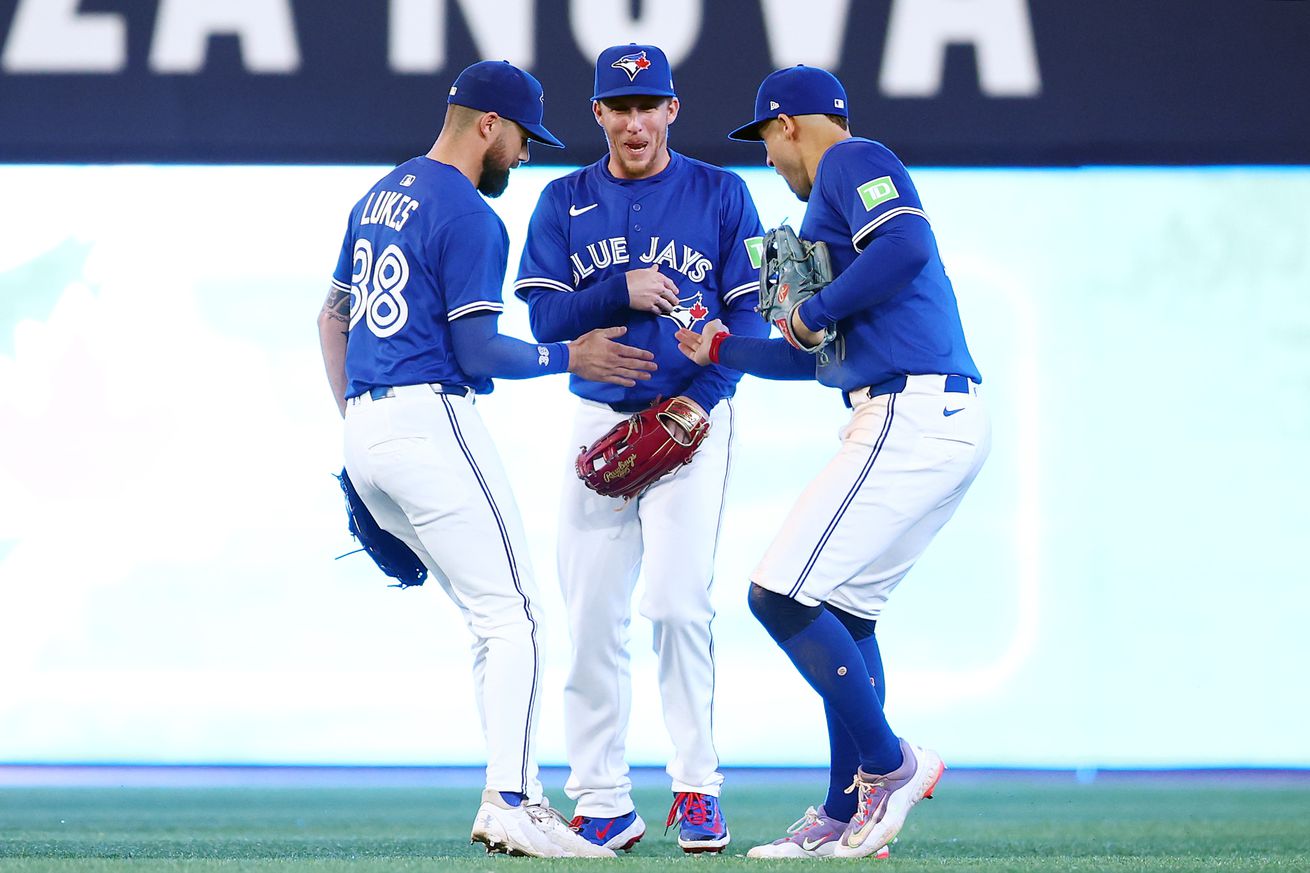
Part 2: The Outfield
Yesterday, I looked at one interesting stat that helps to tell the story of each Blue Jays infielder’s season. Today, I’m going to look at the outfield and bench players.
George Springer: 92.6mph average exit velocity. Springer is hitting the ball really hard, 2.8mph harder than his previous career high. He’s also elevating the ball more, essentially doubling last year’s launch angle to 18.7 degrees, and swinging much less often while making less contact on his swings. The conclusion’s pretty clear: after a couple of seasons in which lack of power on contact sapped his performance in spite of still solid strikeout rates, he’s gone for an all in approach that trades strikeouts for power. So far it’s worked phenomenally. He’s cooled off after a torrid start but still has a 116 wRC+ in May and 138 overall, which would be his best result since his first year in Toronto. The underlying stats seem to suggest that it’s mostly sustainable too.
Daulton Varsho: 113.9 max exit velocity. Another career best, by a 1.4mph margin. Varsho’s going the opposite direction to Springer in terms of approach, swinging at a career high percentage of pitches, but he also seems to have made the calculation that it makes sense to just swing hard and try to yank home runs out of the park, even if a bigger swing carries a higher rate of misses.
Myles Straw: 3. If you add his 2023 and 2024 wRC+ values, you get a number that’s still 3 lower than his 2025 rate. As with Tyler Heineman yesterday, ask no questions about why or how. You’ll only spook the baseball ghosts.
Addison Barger: 80% contact rate. Barger has always had power, although this year he’s significantly raised the ante by reaching 116.5mph, something only 10 other hitters have done this season. He’s also got a good eye, not chasing much in spite of what his 6% walk rate so far might suggest. Those were at least partly expected, but the fact that he’s proving to be an above average contact hitter in MLB is an exciting development. There are all the ingredients here for a middle of the order slugger, the kind of bat that plays at any position.
Nathan Lukes: 92.6% zone contact rate. Lukes doesn’t have much power, with a bottom tier 86.6mph average exit velocity, but he makes load of quality contact, rarely whiffing inside the zone and producing tons of line drives (31.1% of batted balls so far). He’s been almost entirely hidden from lefties, which surely helps, but he looks like a high quality average and OBP oriented fourth outfielder.
Alan Roden: 84.6mph average exit velocity. Roden entered the season with some hype after a great spring, but fell on his face in his first MLB test. His contact rate was still better than average, and his plate discipline was strong, but he just wasn’t getting to his A swing against big league pitching. He’s added 5mph to that average since his demotion to Buffalo and is demolishing the International league as a result. He’ll get another shot, and hopefully he’s better able to catch up to MLB pitching when he does.
Will Wagner: 2.2% barrel rate. Wagner was another significant disappointment early. He looked like a future regular after a red hot post-deadline tryout last season, but he scuffled badly in 2025 before being sent down. He was still making contact at an above average clip, and still displaying solid discipline, but while his average exit velocity was alright and he actually lifted the ball more he wasn’t quite squaring it up. The hope is that, like I wrote with Bo Bichette yesterday, this is luck and a few hard grounders and fly balls turn into line drives over time, returning him to something like last year’s performance.
Anthony Santander: 19.1% pulled ground ball rate. Santander is hitting the ball just about as hard as he usually does (89.9mph), but he’s not lifting it quite as well (17.4 degree launch angle, still high but not the extreme >20 degree level he’s been at for the past three years) and is pulling it more (54%, 9 percentage points above his career norm). Normally pulling the ball is good for sluggers, but combined with reduced lift it’s got him hammering ground balls right into the shifted defence, producing a career low .223 BABIP and suppressing his opportunities for flies to carry out of the yard. The good news is that this is the kind of thing that’s likely a small tweak away from being fixed, rather than the kind of problem that seems to portend permanent decline.
I’ll be back on Monday with a look at the starting rotation.